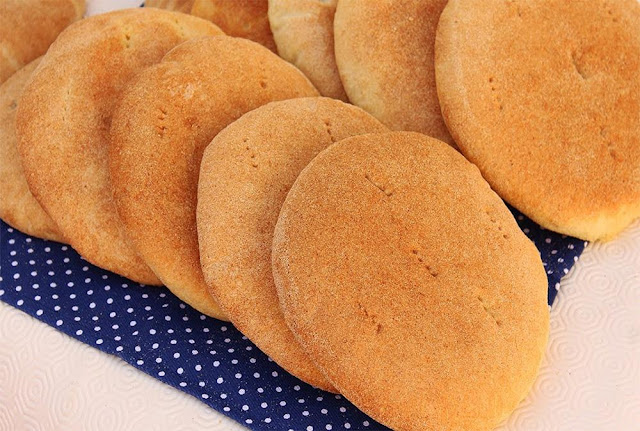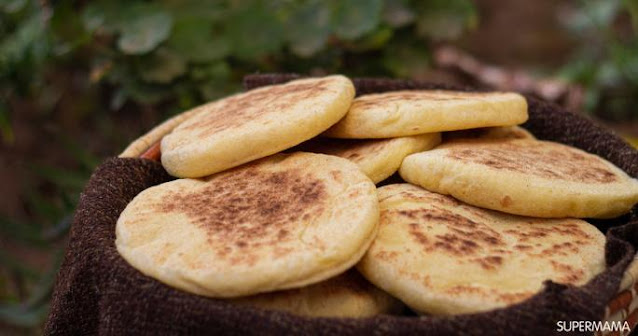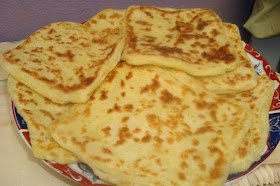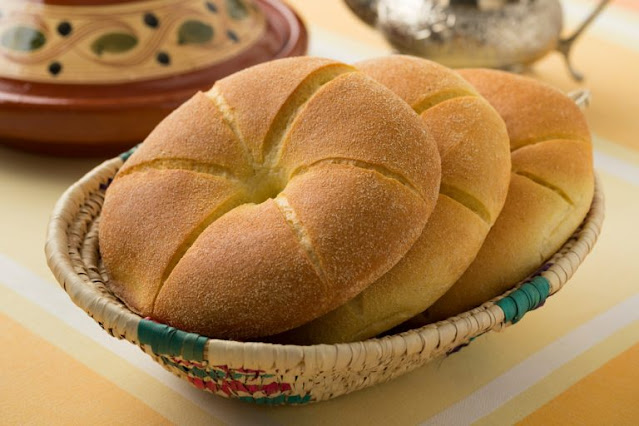Moroccan bread is a must-try for anyone looking to explore the diverse and flavorful world of Moroccan cuisine. In this article, we'll take you on a journey through the rich cultural history and culinary traditions of Moroccan bread, introducing you to some of the most famous and delicious Moroccan breads out there. From the chewy Khobz bread to the crispy Baghrir and everything in between, you'll learn about the unique flavors and techniques that make Moroccan bread such a beloved and iconic food item. So get ready to indulge your taste buds and discover the mouthwatering world of Moroccan breads!
What Are the Famous Moroccan Breads? Discover the Best Breads of Morocco
Moroccan cuisine is rich in flavors, colors, and textures. One of the staples of Moroccan cuisine is bread. Bread is a crucial part of every meal in Morocco, from breakfast to dinner. Moroccan bread is known for its unique taste, texture, and shape.
First and foremost, we have Khobz, the most common bread in Morocco. Khobz is a round, flatbread with a crispy crust and a soft interior. It is usually made with white flour, yeast, salt, and water. Khobz is perfect for dipping in tagines and stews, or for making sandwiches. Additionally, Khobz is a staple during Ramadan and is usually served with Harira, a traditional Moroccan soup.
Another popular bread in Morocco is Batbout. Batbout is a small, round bread that is similar to pita bread. It is usually made with white flour, yeast, salt, and water. The dough is rolled out into small circles and then cooked on a griddle. Batbout is perfect for sandwiches, as it has a pocket that can be filled with meat, vegetables, or cheese. It is also a popular breakfast bread in Morocco, served with butter, honey, or jam.
Moving on, we have Rghaif, also known as Msemen. Rghaif is a square-shaped bread that is thin and flaky. It is made with flour, semolina, yeast, salt, and water. Rghaif is usually cooked on a griddle and served hot. It is perfect for breakfast or as a snack, and it can be filled with honey, cheese, or eggs.
Next, we have Kesra, a round, flatbread that is popular in the southern regions of Morocco. Kesra is made with flour, semolina, salt, water, and sometimes yeast. It has a crispy crust and a soft interior, and it is perfect for dipping in sauces or soups. Kesra is usually served with a traditional Moroccan breakfast, which includes olive oil, honey, and Moroccan tea.
Another famous bread in Morocco is Mlaoui. Mlaoui is a folded bread that is crispy on the outside and soft on the inside. It is usually made with flour, semolina, yeast, salt, water, and oil. Mlaoui is perfect for breakfast or as a snack, and it can be filled with sweet or savory ingredients. In Morocco, Mlaoui is often served with Amlou, a traditional Moroccan spread made from almonds, honey, and argan oil.
Last but not least, we have Baghrir, also known as "Thousand Holes" pancakes. Baghrir is a spongy pancake that is usually served with honey or Amlou. It is made with semolina, flour, yeast, and water. Baghrir is cooked on only one side, and as it cooks, it forms small holes on the surface. The holes make it perfect for absorbing honey, butter, or other sweet toppings.
Moroccan bread is not just a staple food in Moroccan households but also an integral part of Moroccan culture and tradition. Each bread has a unique history and preparation method, making it a significant aspect of Moroccan cuisine. The soft and chewy Msemen, for instance, is a popular breakfast option, while the crispy Rghaif is perfect for tea time. The fluffy and spongy Baghrir, also known as Moroccan pancakes, is a sweet and satisfying treat that can be enjoyed with honey, butter, or jam.
If you're planning to visit Morocco, trying out the local bread is a must. You can find these bread in every corner of the country, from street vendors to fancy restaurants. You can also participate in the making of some of these bread during cooking classes or culinary tours. Learning how to make Msemen or Batbout, for instance, can be a fun and exciting way to immerse yourself in Moroccan culture and take a piece of it back home with you.
In addition to being delicious, Moroccan bread is also healthy and nutritious. Most of the bread is made with natural ingredients, such as wheat flour, water, and yeast, and some may include herbs, spices, or honey. The high fiber content of Moroccan bread can help regulate digestion and prevent constipation, while the low-fat and low-sugar content make it a healthier option than other baked goods. So, if you're looking for a tasty and healthy alternative to regular bread, Moroccan bread is the perfect choice. It's a guilt-free way to indulge in the flavors of Morocco and maintain a balanced diet at the same time.
Also, it's worth mentioning that Moroccan bread is not only popular in Morocco but also globally. With the rise of Moroccan cuisine worldwide, the demand for Moroccan bread has also increased. Many Moroccan restaurants and bakeries have opened up outside of Morocco, offering traditional and modern versions of Moroccan bread to their customers. Some variations include adding fillings or toppings to the bread, such as cheese, olives, or spices. So, if you're not in Morocco, don't worry, you can still savor the taste of Moroccan bread in your own city. Just look for a Moroccan restaurant or bakery, and you'll be transported to the streets of Morocco with every bite.
And don't forget that Moroccan bread is not just food; it's a symbol of Moroccan hospitality and generosity. In Moroccan culture, bread is considered sacred and is often used as a way to welcome guests into homes and restaurants. So, when you're offered bread in Morocco, it's not just a simple gesture; it's a way of showing respect and appreciation. Therefore, trying Moroccan bread is not just about tasting new flavors; it's also about experiencing the warmth and kindness of Moroccan hospitality.
It's worth noting that Moroccan bread is not just a delicious food item, but it also has a significant historical and cultural importance. Bread-making in Morocco has been a tradition for centuries, and the techniques and methods used have been passed down from generation to generation. Bread-making is often a communal activity in Moroccan villages, where women gather to knead and bake bread in communal ovens. This tradition has not only preserved the art of bread-making but also helped build a sense of community and unity among Moroccans. So, the next time you bite into a warm and fragrant Moroccan bread, remember that you're not just enjoying a tasty food item; you're also partaking in a rich cultural heritage.
In conclusion, if you're a bread lover, be sure to add Moroccan bread to your list of must-try breads. With its unique shapes, flavors, and cultural significance, Moroccan bread offers a one-of-a-kind culinary experience that you won't want to miss. From the chewy Khobz bread to the crispy Baghrir and the soft Msemen, there's a Moroccan bread for every taste and occasion. So, go ahead and explore the diverse and delicious world of Moroccan bread for yourself and discover the rich and flavorful culture that it represents.







